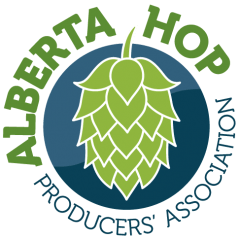 On Saturday afternoon Alberta witnessed the creation of something that I am pretty sure almost none of us coming a few years ago. I had the privilege to attend the launch of the Alberta Hop Producers Association. The group has formed to support the growing hop farm industry in Alberta. They want to build a coherent industry brand of Alberta-grown hops as part of the growing Alberta beer industry.
On Saturday afternoon Alberta witnessed the creation of something that I am pretty sure almost none of us coming a few years ago. I had the privilege to attend the launch of the Alberta Hop Producers Association. The group has formed to support the growing hop farm industry in Alberta. They want to build a coherent industry brand of Alberta-grown hops as part of the growing Alberta beer industry.
The association begins with five farms either operating or in development – Northern Girls (Darwell), Anvil (outside Edmonton), Pair ‘O Dice (Vauxhall), Sydewynder (Aldersyde) and Hired Hand (Morinville). The farms span the breadth of Alberta and each is a very unique operation (I hope to do a more in-depth look at hop farms in the near future). For the moment the group is small, but they are hopeful a similar burst of growth will occur with hops as has been happening in Alberta craft malting.
The association launched with a meet-and-greet at Craft Beer Market in Edmonton, complete with 5 casks made in whole or in part with Alberta-grown hops. Alley Kat, Outcast, Situation and a collaboration with Big Rock and Common Crown were all made beer for the event. In fact the Big Rock/ Common Crown release, 3-Way IPA (the third collaborator is, of course, Nothern Girls Hopyard), is seasonal release available in cans around the province. It is a wet hop beer, meaning the hops went in fresh, not dried.
The beer was quite varied – from a gentle wheat beer to a red ale to a big IPA – and the hop characteristics were interesting. I struck up some conversations with the hop growers and conversation turned to the nature of a hop terrior . They are convinced the specific climate and soil conditions in Alberta will allow them to create some made-in-Alberta hop flavours. As a case in point, one of the owners of Northern Girls placed a small pile of hops in my hand without saying a word. I recognized a slight citrus note, but also an earthy, almost pungent character. Confused, I made a stab at what the variety was, and was dead wrong. It was Centennial, but like no other Centennial I have ever smelled (note its C-like character may come through more in the brewing). That was my introduction to the possibility of an Alberta hop terroir.
I can hear some of you muttering under your breath as I write this. “But you can’t grow hops in Alberta!’. That has long been a sentiment around these parts. I can see why. If we look at the regions that excel at growing hops, like the U.S. northwest, Germany, southern England, Czech Republic, we find climates with longer growing seasons, ample rainfall and temperate winters. Not how one would describe Alberta.
But as I learned on Saturday, those are not the important features that affect hop production. Much of the science went over my head, but it many ways we have a good climate for hops with long growing days, a good amount of rainfall (except in the southeast) and fertile soil. Plus the key metric is the number of days between flowering and first frost. At times it can be a bit nip and tuck, but I am assured it can work. And clearly it does.
The creation of a hop producers’ association is an encouraging development in Alberta’s beer scene. We have long known our province produces world-class malting barley. Our water is, generally, clean and good for brewing. Yeast is a factor of good laboratory technique and strain choice (and so not really geography dependent). The missing piece has been hops.
The prospect of having a supply of Alberta-grown hops means the possibilities of an all-Alberta beer (as more than a quirky one-off) are getting closer.
Alberta’s hop farms are small and, for the moment, can only supply small bundles of hops for specialty batches and one-offs. Plus the economics of scale have not yet kicked in, meaning they remain a bit pricey compared to the large suppliers.
These are hurdles the hop growers will need to overcome. But with their brand new association, they seem on their way to doing it.


Leave a Reply